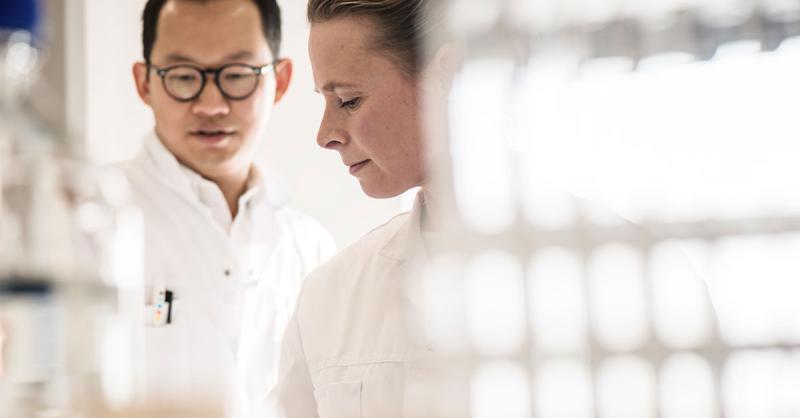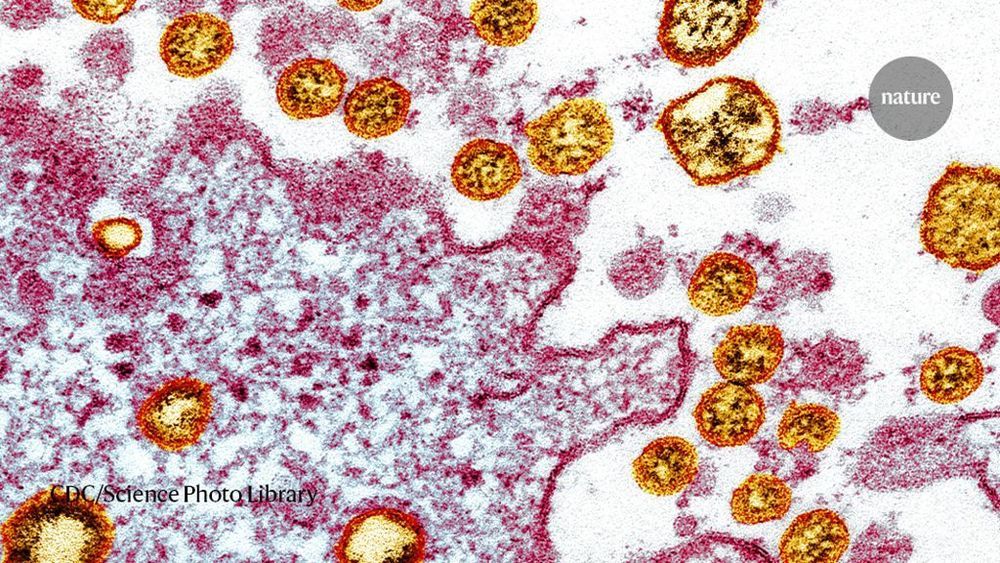When it comes to singularities, black holes are only half the story. White holes — regions of space where nothing can enter — are returning to the experimental spotlight.
#OneWorldTogetheratHome #COVID19 #abcnewslive
SUBSCRIBE to ABC NEWS: https://bit.ly/2vZb6yP
Watch More on http://abcnews.go.com/
LIKE ABC News on FACEBOOK
https://www.facebook.com/abcnews
FOLLOW ABC News on TWITTER:
Tweets by ABC
GOOD MORNING AMERICA’S HOMEPAGE:
https://www.goodmorningamerica.com/
As there has been a considerable increase of questions, BioGaia has summarized the scientific information about the SARS-CoV-2 virus and the possible role of probiotics in the current COVID-19 global outbreak.
• Could probiotics protect against SARS-CoV-2 virus infection and aid in avoiding COVID-19? • Could probiotics help our immune system to prevent or potentially fight Coronavirus infections? • What are the scientific facts and the credible sources?
Please find below a summarized and updated information about this topic. Please note that to date, the scientific information we have regarding the current COVID-19 outbreak in terms of viral transmission, physiopathology and disease control is still preliminary and might change as time passes and more information becomes available.
Find out how the coronavirus can affect the body in mild and severe cases. In severe cases, coronaviruses can lead to more serious symptoms, including organ failure and trouble breathing.
Feline Coronavirus (FCoV) is a common viral infection in cats. It generally causes asymptomatic infection, but can cause mild diarrhea. As yet poorly understood changes in the virus can give rise to mutants that lead to the development of feline infectious peritonitis (FIP). Most cats infected with a FCoV eliminate virus following infection, but some cats may develop a persistent infection. These cats are generally asymptomatic, can shed large amounts of virus in feces, and serve as a continual source of infection for other cats in the environment. Continual circulation of FCoV within a cat population may increase the chance that a virulent FIP strain might emerge. While the pathogenesis of FIP is poorly understood, it is now believed that detection and removal of persistently infected and shedding cats in a multi-cat household can reduce the risk of FIP emergence within that population.
In response to the increased interest within the cat breeding and cat owning community, the Animal Health Diagnostic Center at Cornell University now offers a fecal RT-PCR test for FCoV. This test can be used to identify asymptomatic FCoV shedding cats so steps can be taken to isolate them from other cats or to prevent their introduction to a resident population. Samples required for the fecal RT-PCR screening test are 2–5 grams fresh feces. When screening an individual cat in a multi-cat household it is important to positively identify the source of the fecal sample. Mixing of fecal samples from multiple cats may result in an inaccurate result. Feces should be stored in a clean plastic bag to prevent dehydration.
In clinical FIP suspect cats, the test can also identify FCoV in ascites fluid, whole blood, plasma, serum or fresh tissues (kidney, liver, or spleen). Samples from FIP-suspects should include 1–2 ml of fluid (ascites, whole blood, serum, or plasma) or 1–2 grams of fresh tissues.
Idk I already got the flu after the flu shot and I had to take like 100 vitamin c tablets which I would not suggest but I got over whatever it was in no time.
A hospital has reportedly turned to vitamin C as a treatment for the coronavirus, after reports emerged from China that doses well in excess of daily Dietary Reference Values (DRV) showed promise.
American oncologists are rushing to prioritise the patients at greatest risk, institute new protections, and learn from their collective experiences, Bryn Nelson reports.
A patient in Washington, newly diagnosed with breast cancer, fought to get her lumpectomy surgery rescheduled after it was cancelled indefinitely. 1 A stuffy nose required another patient in Massachusetts with a recurrent brain tumour to undergo multiple layers of screening before he could receive his immunotherapy infusion. 2 A patient with bladder cancer in North Carolina couldn’t get immunotherapy at all because of a lack of surgical masks and gloves. 3 Then he was denied a surgical alternative because he needed a covid-19 test first. Since he hadn’t been admitted to a hospital with serious covid-19 symptoms, he didn’t meet the testing criteria.
Covid-19 has wreaked havoc on cancer care throughout the US as medical centres scramble to cancel or rearrange surgeries or treatments, tackle a continuing shortage of tests and supplies, and devise new safety protocols to protect a highly susceptible patient group.
In an effort to find an effective antiviral drug against SARS-CoV-2. Calibr, the drug development division of Scripps Research, is leveraging a unique resource—the ReFRAME drug collection. The ReFRAME drug collection comprises over 14,000 compounds that have been approved by the FDA for other diseases. A medicine identified from this resource could be rapidly repurposed.
Natural antiviral and immune boosters (elderberry, curcumin, echinacea, quercetin etc), a new practical guide by Forever Healthy Foundation: “… We identified 50 natural substances and mixtures recommended for preventing infection with SARS-CoV-2 or lessening the severity of symptoms of COVID-19. As there hasn’t been enough time for the scientific community to conduct clinical trials on the effects of any of the compounds on SARS-CoV-2, we chose to recommend substances with established safety that have shown strong antiviral/immunomodulatory effects in previously conducted clinical trials or clinical practice.
This resulted in a final recommendation for 8 natural compounds, 4 that have shown activity against other coronaviruses and that have strong immunomodulatory effects (see Recommended Based on Scientific Literature) along with 4 further compounds that have traditionally been used for prevention/treatment of viral infections with a long record of efficacy and safety (see Recommended Based on Clinical Practice).
Additionally, we found there is some supporting evidence for 23 more substances, discussed in the Potentially Useful section…” https://brain.forever-healthy.org/plugins/servlet/mobile?con…/101057620
This Practical Guide is part of Forever Healthy’s “Maximizing Health” initiative that s eeks to holistically review the world’s leading medical knowledge on various health-related topics and turn it into actionable information.
Special thanks are extended to the whole team at Forever Healthy and all of our collaborators for their friendly contributions.
Study estimates a more than 50-fold increase in coronavirus infections compared to official cases, but experts have raised concerns about the reliability of antibody kits.







